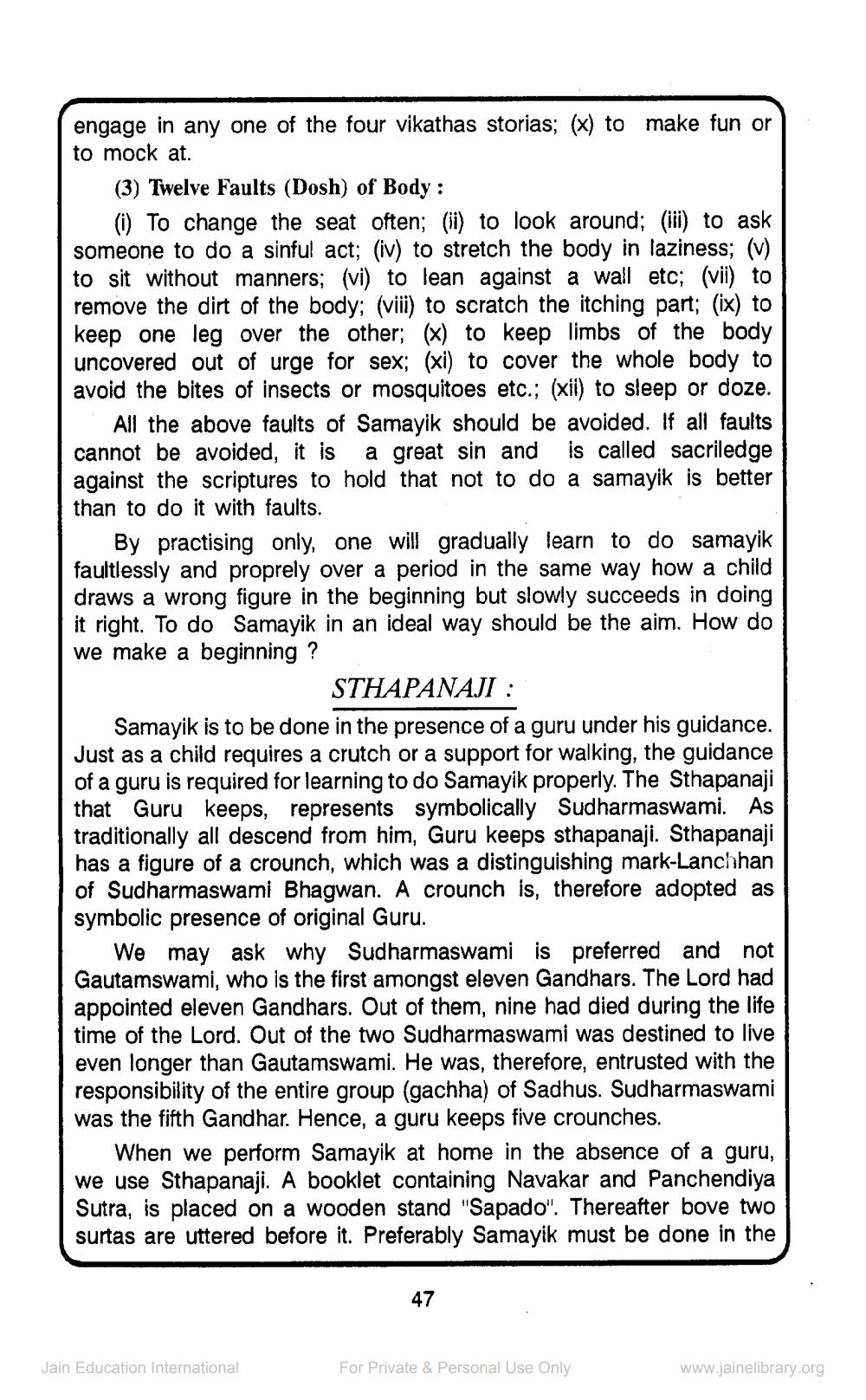________________
engage in any one of the four vikathas storias; (x) to make fun or to mock at.
(3) Twelve Faults (Dosh) of Body:
(i) To change the seat often; (ii) to look around; (iii) to ask someone to do a sinful act; (iv) to stretch the body in laziness; (v) to sit without manners; (vi) to lean against a wall etc; (vii) to remove the dirt of the body; (viii) to scratch the itching part; (ix) to keep one leg over the other; (x) to keep limbs of the body uncovered out of urge for sex; (xi) to cover the whole body to avoid the bites of insects or mosquitoes etc.; (xii) to sleep or doze.
All the above faults of Samayik should be avoided. If all faults cannot be avoided, it is a great sin and is called sacriledge against the scriptures to hold that not to do a samayik is better than to do it with faults.
By practising only, one will gradually learn to do samayik faultlessly and proprely over a period in the same way how a child draws a wrong figure in the beginning but slowly succeeds in doing it right. To do Samayik in an ideal way should be the aim. How do we make a beginning?
STHAPANAJI : Samayik is to be done in the presence of a guru under his guidance. Just as a child requires a crutch or a support for walking, the guidance of a guru is required for learning to do Samayik properly. The Sthapanaji that Guru keeps, represents symbolically Sudharmaswami. As traditionally all descend from him, Guru keeps sthapanaji. Sthapanaji has a figure of a crounch, which was a distinguishing mark-Lanchhan of Sudharmaswami Bhagwan. A crounch is, therefore adopted as symbolic presence of original Guru.
We may ask why Sudharmaswami is preferred and not Gautamswami, who is the first amongst eleven Gandhars. The Lord had appointed eleven Gandhars. Out of them, nine had died during the life time of the Lord. Out of the two Sudharmaswami was destined to live even longer than Gautamswami. He was, therefore, entrusted with the responsibility of the entire group (gachha) of Sadhus. Sudharmaswami was the fifth Gandhar. Hence, a guru keeps five crounches.
When we perform Samayik at home in the absence of a guru, we use Sthapanaji. A booklet containing Navakar and Panchendiya Sutra, is placed on a wooden stand "Sapado". Thereafter bove two surtas are uttered before it. Preferably Samayik must be done in the
47
Jain Education International
For Private & Personal Use Only
www.jainelibrary.org




